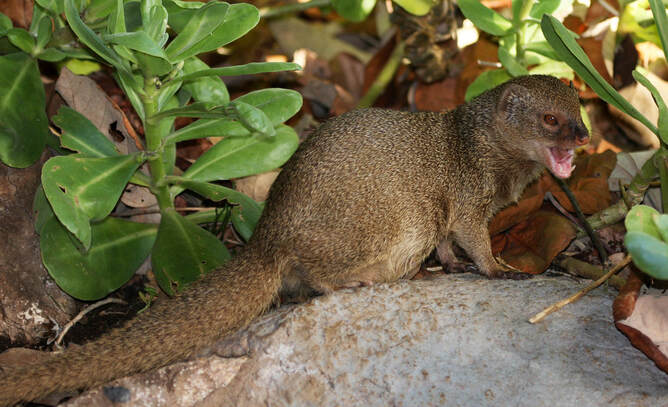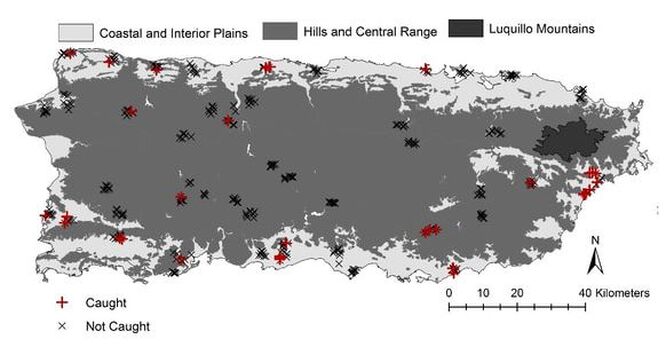Mongooses Puerto Rico

The small Indian mongoose (Herpestes auropunctatus) is a small mammal that was introduced in Puerto Rico around 1890s. Originally from the Middle east and South Asia, mongooses were introduced in islands of the Caribbean and Pacific sea as a biocontrol measure against rats or snakes. Today, unfortunately mongooses are listed as one of the top 100 worst invasive species because of their impacts on native species. Mongooses have grown in numbers because of a lack of predators and opportunistic feeding habits, in addition they are the main reservoir of rabies and can also carry the bacteria Leptospira.
Effective management strategies are likely location-specific for mongooses in Puerto Rico, however, we don't know much about their population numbers or presence outside of main protected areas. For management strategies involving population control, data on population size and spatial distribution are very valuable. I am aiming to have an initial understanding of the current population of mongooses in El Yunque National Forest and how it associates with habitat features in the landscape.
From the Yunque Project, we published two papers on the question of population and trapping success:
1. Small Indian mongoose (Herpestes auropunctatus) population abundance and effects of habitat features on trapping success in protected areas of eastern Puerto Rico.
2. Environmental features associated with trapping success of mongoose (Herpestes auropunctatus) in eastern Puerto Rico
In the same vein, I became curious about the ability of mongooses to invade a suite of habitats in the island. Even after mongoose population removal from sensitive conservation areas, they would still recolonize. So it got me thinking... I wanted to ask how the landscape itself and the general premise of landscape connectivity can aid in mongoose movement and dispersal. It is established that the amount of optimal habitat available and its structural connectivity is crucial for the success in establishment of invasive mammalian populations. After a lot of brainstorming we designed a study with the objectives of quantifying the genetic variation and population structure of the small Indian mongoose in Puerto Rico, and second, assess the influence of landscape connectivity and
features on the population genetic patterns.
From this project, we have published our first manuscript using network analysis models to quantify structural landscape connectivity:
1. Conservation planning for island nations: Using a network analysis model to find novel opportunities for landscape connectivity in Puerto Rico
features on the population genetic patterns.
From this project, we have published our first manuscript using network analysis models to quantify structural landscape connectivity:
1. Conservation planning for island nations: Using a network analysis model to find novel opportunities for landscape connectivity in Puerto Rico


